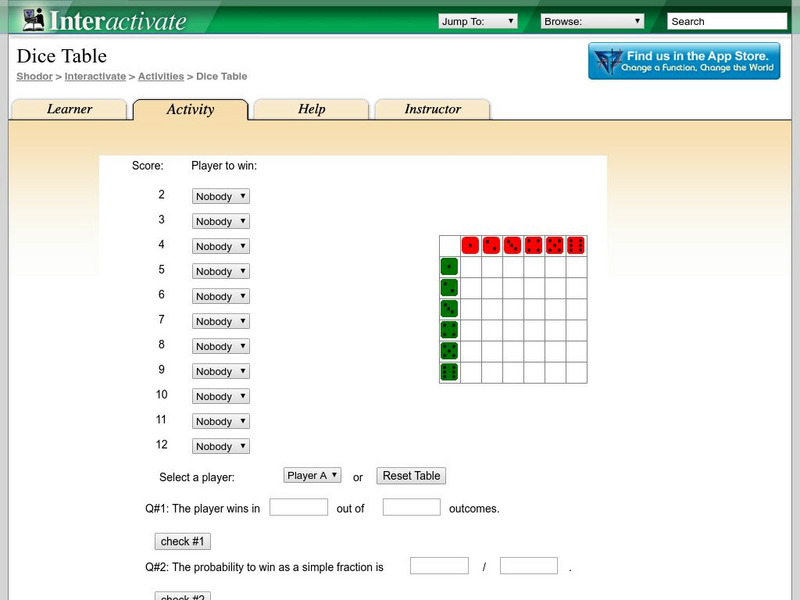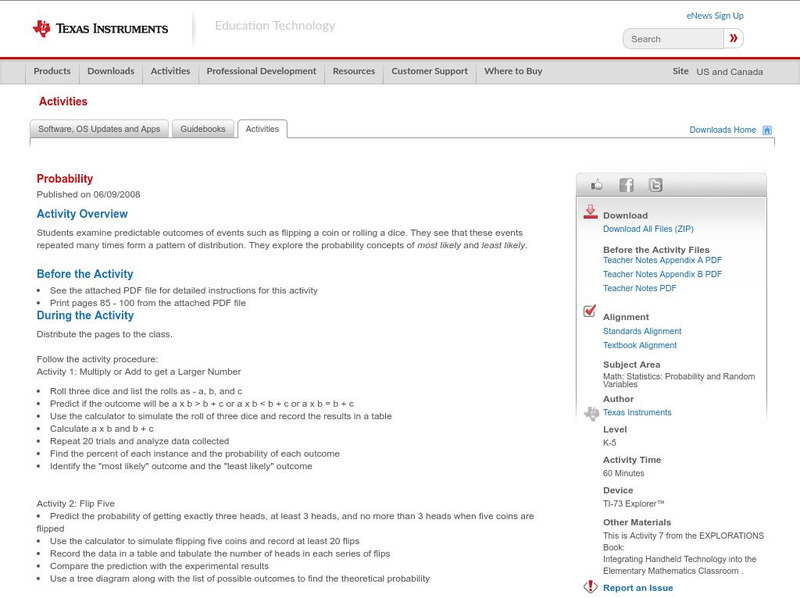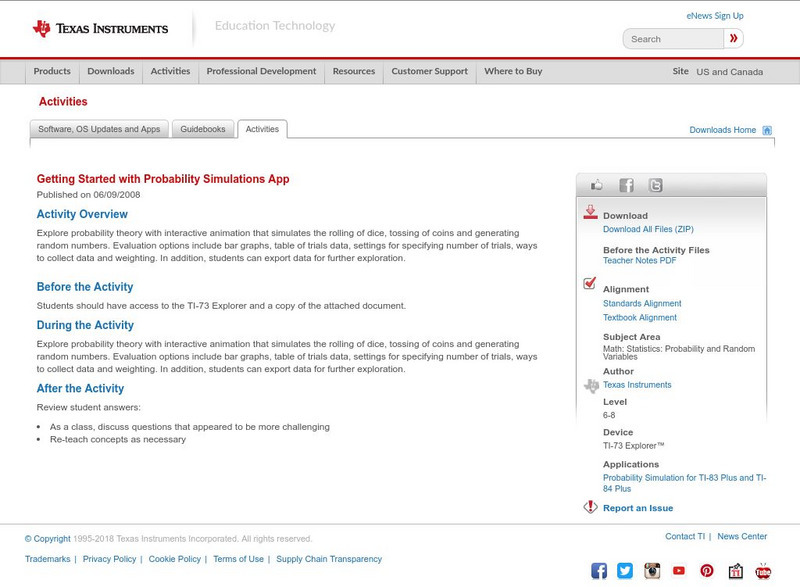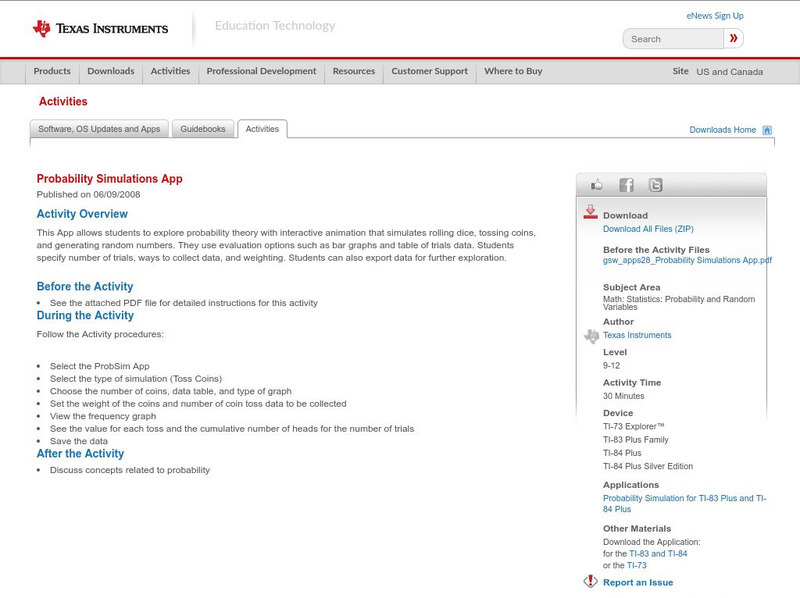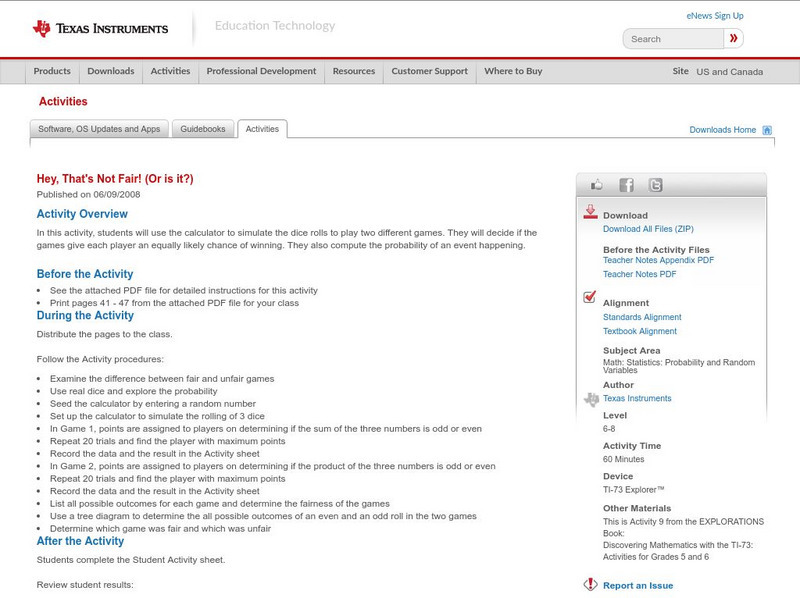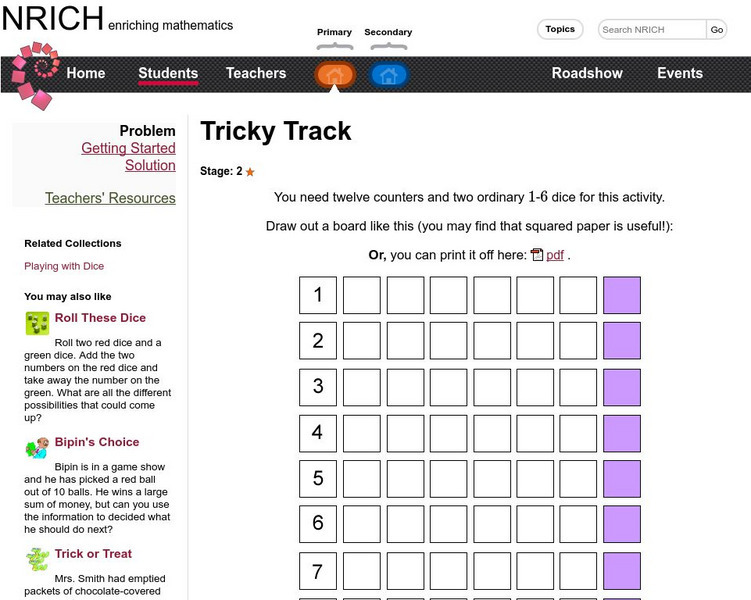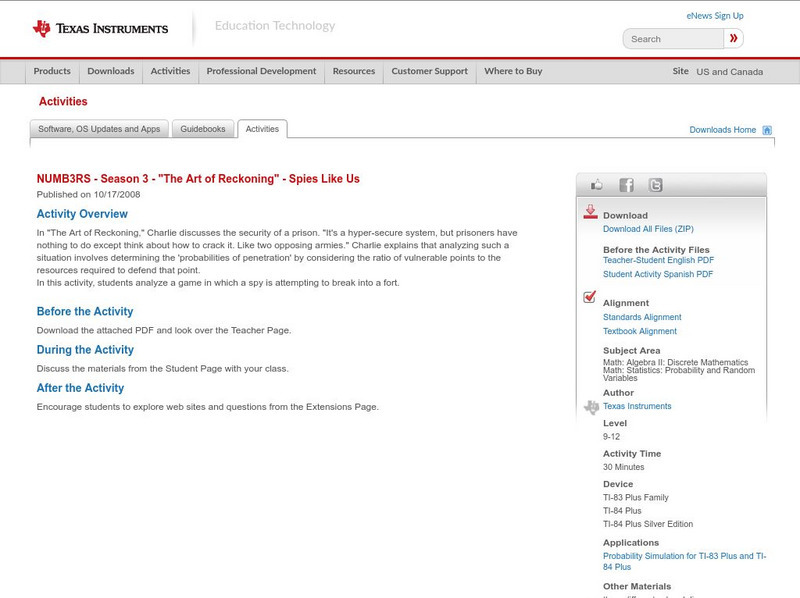Hi, what do you want to do?
Math Is Fun
Math Is Fun: Activity: An Experiment With a Die
Explore probability with this dice experiment. Includes instructions for recording data on a table, creating a graph, questions to investigate, a probability formula, and a discussion of probability.
Shodor Education Foundation
Shodor Interactivate: Dice Table
A dice-table activity introduces students to probability and to converting probability to a simple fraction, a decimal, and a percentage.
Texas Instruments
Texas Instruments: Probability
Students examine predictable outcomes of events such as flipping a coin or rolling a dice. They see that these events repeated many times form a pattern of distribution. They explore the probability concepts of most likely and least likely.
Shodor Education Foundation
Shodor Interactivate: Experimental Probability
Experiment with probability using a fixed size section spinner, a variable section spinner, two regular 6-sided dice or customized dice.
Shodor Education Foundation
Shodor Interactivate: Racing Game With Two Dice
Simulate a game where "N" players roll two dice, and the lucky player has an advantage for reaching the finish.
Shodor Education Foundation
Shodor Interactivate: Experimental Probability
This interactive learning activity allows students to explore experimental probability using spinners and dice. Teacher resources are included.
Texas Instruments
Texas Instruments: Getting Started With Probability Simulations App
Explore probability theory with interactive animation that simulates the rolling of dice, tossing of coins and generating random numbers. Evaluation options include bar graphs, table of trials data, settings for specifying the number of...
CK-12 Foundation
Ck 12: Algebra Ii: 5.1 Sample Spaces and Probability
This section explores how to determine the sample space, or possible outcomes, for an event such as rolling dice. It also investigates how to determine the probability of different outcomes occurring for an activity such as flipping a...
Texas Instruments
Texas Instruments: Probability Simulations App
This App allows students to explore probability theory with interactive animation that simulates rolling dice, tossing coins, and generating random numbers. They use evaluation options such as bar graphs and table of trials data....
National Council of Teachers of Mathematics
Nctm: Figure This: Are Dice Fair or Not?
Is it fair or not fair? That is the question. Try this math challenge where you use your probability and number sense skills to determine whether or not a game is fair. Find out how mastering this challenge can be useful in real life...
Shodor Education Foundation
Shodor Interactivate: Crazy Choices Game
Compare theoretical and experimental probabilities, using dice, cards, spinners, or coin tosses. Three different probabilities can be compared at once.
Texas Instruments
Texas Instruments: Hey, That's Not Fair! (Or Is It?)
In this activity, students can use the calculator to simulate the dice rolls to play two different games. They will decide if the games give each player an equally likely chance of winning. They also compute the probability of an event...
University of Cambridge
University of Cambridge: Nrich: Tricky Track Game
The directions on this site are for an interesting, two-player dice game named Tricky Track. Grab a partner and play. Do your results surprise you?
Oswego City School District
Regents Exam Prep Center: Mutually Exclusive & Independent Events
The somewhat tricky differences between mutually exclusive, non-mutually exclusive, independent, and dependent events are defined here. Common items such as coins, colored cubes, and a deck of cards are all part of the easy-to-understand...
Texas Instruments
Texas Instruments: Numb3 Rs: Spies Like Us
Based off of the hit television show NUMB3RS, this lesson focuses on a spy trying to penetrate a fort's entrance, which is subsequently being guarded by three sentries. One student controls the spy and has a choice of where to move;...






